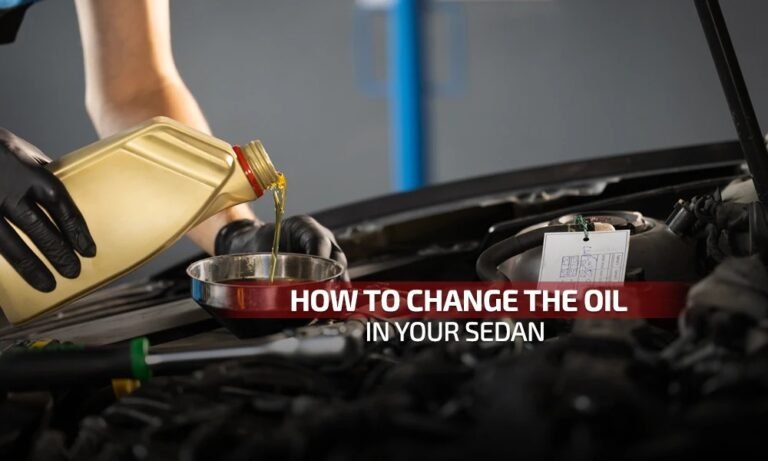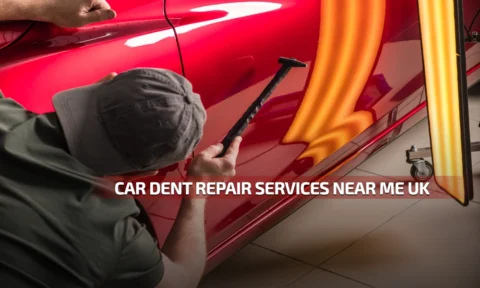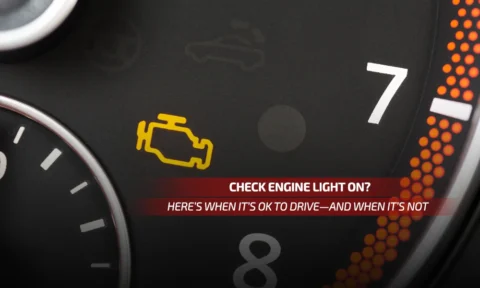Skipping the dealer should save you cash—not cost you in mechanisms.
Follow these 5 clear steps and you’ll not only swap oil like a pro but also avoid common DIY pitfalls (oil grade mix-ups, overtightened plugs, missing crush washers, and LSPI issues).
Step 1: Gather Precision Tools & the Right Oil
Essential kit:
- Correct oil grade (e.g. 5W‑30 or 10W‑40), always check your owner’s manual for API/ILSAC/API SP standards to prevent low-speed pre-ignition (LSPI) in turbo engines
- OEM-approved oil filter & new crush washer/gasket
- Tools: oil filter wrench, socket set, torque wrench, funnel, and quality drain pan
- Safety: gloves, eye protection, jack stands or ramps, wheel chocks
Why it matters:
Using the correct oil avoids engine wear and LSPI. A torque wrench ensures plugs and filters aren’t over-tightened—avoiding leaks or stripped threads.
Step 2: Warm, Lift & Drain — Safely
- Start your engine for 3–5 min to warm oil to ~100°F
- Park on level ground, chock rear wheels, raise via ramps or jack stands—never rely on a jack only
- Locate & carefully remove the drain plug—catch oil in your pan; let it drain completely
- Replace crush washer and torque plug to manufacturer spec
Why it matters:
Warm oil drains fully; correct lift height gives safe access; torque prevents leaks or stripped pans.
Step 3: Swap the Oil Filter Correctly
- Position drain pan under filter, remove gently
- Lubricate new filter gasket with fresh oil
- Hand‑tighten new filter snugly (no tools)
- Watch for rubber remnants from old seal—avoid double sealing
Why it matters:
Correct sealing stops leaks. Hand tight ensures future removals don’t strip housing.
Step 4: Refill, Set & Check Levels
- Lower sedan, remove oil cap, insert funnel, and slowly add new oil
- Check dipstick between cold/hot markings; avoid overfilling
- Run engine for 30 sec, recheck for leaks
- After settling, re-check oil level—add if needed
Why it matters:
Overfilling can damage seals or trigger LSPI. Dipstick ensures precision, not guesswork.
Step 5: Recycle, Log & Monitor
- Seal old oil and filter, recycle them responsibly
- Record date, mileage, oil grade, filter used
- Check oil level after 100 miles for any drift
Why it matters:
Proper recycling protects the environment; logs help maintain warranty & track oil degradation; follow-up catch slow leak.
3 Things to Keep in Mind When Doing This Yourself
- Oil grade & spec = engine health
Modern engines need specific viscosity and API/ILSAC/SP certification to prevent LSPI and maintain turbo longevity.
- Torque matters
Drain plugs and filters need precise torque—hand-tight isn’t enough; overtight risks damage.
- Clean setup = clean oil
Use quality drip pans, cardboard, or a gasket lip—avoid contamination while working.
If the DIY sounds daunting to you, I suggest you find a good car repair shop that you can trust.
You shouldn’t. Most modern drain plugs use a soft aluminum or copper crush washer that compresses when tightened to form a seal. Reusing it risks leaks. In some cars, the washer is built into a single-use plug. Always replace them—it’s cheap insurance for a clean job.
It’s not just about viscosity (like 5W‑30). You need to check for industry specs—look for API SP or ILSAC GF‑6 labels on the bottle. These ensure protection against low-speed pre-ignition (LSPI), sludge, and wear—especially important in turbocharged engines common in U.S. sedans.
Over-torqueing can crack your oil pan, strip threads, or crush the gasket on your filter—leading to leaks. Use a torque wrench when possible (typically 18–25 ft-lbs for most plugs) and only hand-tighten the oil filter unless your manual says otherwise.
Now You’re Ready To Change The Oil!
Alright, with these steps in mind, you are ready to tackle the hurdle of changing oil in your sedan!
You know, when you own a vehicle, it is important to know how and when to change certain things in your vehicle.Yes, there are repair shops and garages, but nothing will ever beat the feeling of working on your own car!
Also Read: How to Change Your Oil







